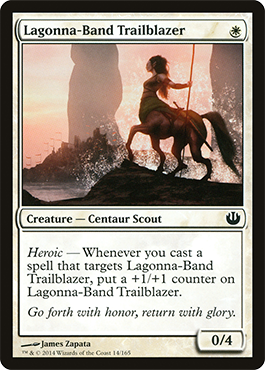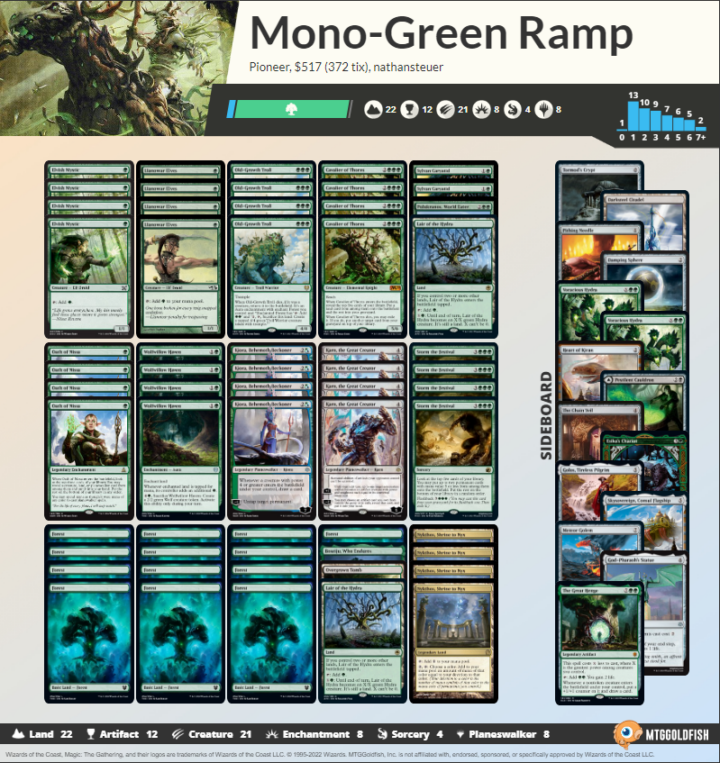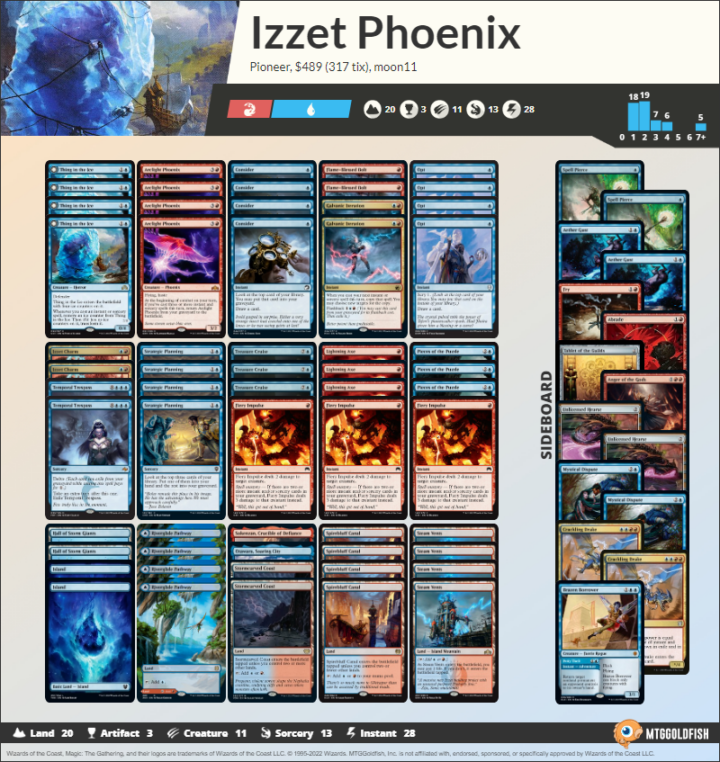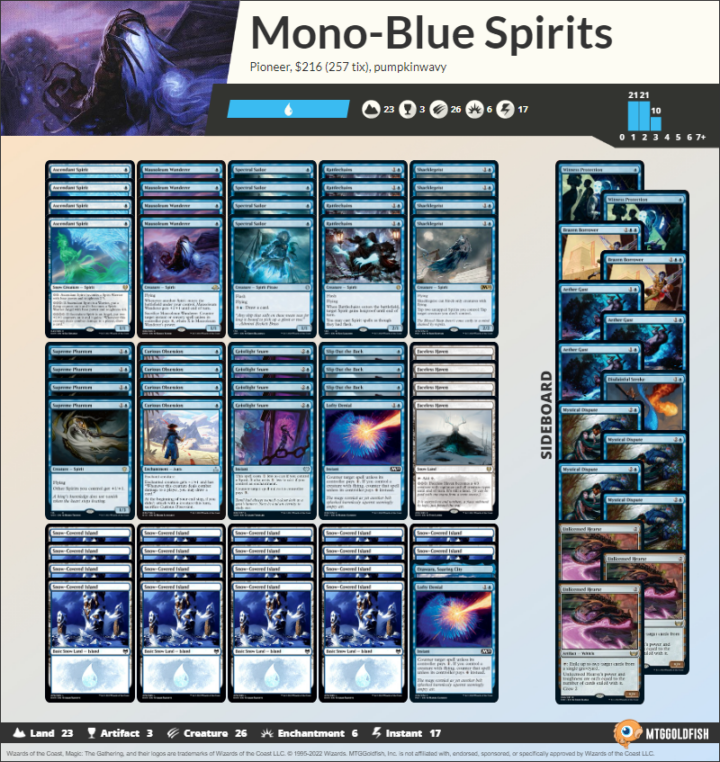As RCQ Season gets into full swing, Mason takes a look at common mistakes Pioneer players make, and what adjustments to make to fix them.
Pioneer is Magic: the Gathering’s rising star these days. You may even be trying to learn the format right now. However, Pioneer is also a new frontier, with players flailing through unexplored territory before the first Pro Tours require being at the top of your game.
If you’ve been searching for guideposts on the path to success in this new format, look no further. This is why you’re losing in Pioneer.
Context is Key
There’s a sentiment within the MTG community that the cards in Pioneer are weak, and this is the root of many problems. By not considering the available deck building options within the format’s context, some players are forcing the wrong lines before they even sit down across from their opponent.
There are strong decks in the context of Pioneer, and the context cards live in is most important for finding success. Instead of thinking whether a card “looks good” in a vacuum, consider how it compares to the cards it must interact with in game.
Take, for example, Lagonna-Band Trailblazer. This card looks weak compared to the entire history of Magic. It doesn’t do anything and needs more support to actually threaten an opponent.
However, consider the fact that Pioneer is currently defined by cards like Fiery Impulse and other variants. So, while Trailblazer might not hold up to the best creatures in Magic’s history, its high toughness can help it play a role in formats like Pioneer.
Zooming out even further, just look at the Rakdos Midrange deck made by MTG streamer Misplacedginger. This deck has polarized the Pioneer community because one camp thinks it’s too heavy on three drops while the other focuses on the sheer number of threats and answers.
I fall closer to the second camp, but I think anyone can see that the list makes sense within the context of the format. It’s only when you try to hold it up against every card ever made that it starts to look like a pile of cards Ginger just happened to have lying around.
This deck is looking to break up what your opponent is trying to do while presenting a clock. Decks in Pioneer often revolve around that idea, and it’s just a matter of finding enough ways to make it possible among the cards in the format.
Defined by Redundancy
You also need to remember that Pioneer has many decks that are just a few cards shy from becoming format warping powerhouses. It’s easy to say, “If I just had X it would solve so many problems.” But since Pioneer is in this fledgling state, the decks that rise to the top are the ones with enough redundant effects to build a cohesive deck.
There are eight one-mana elves in Pioneer that Mono-Green Devotion is built to leverage that mana advantage and force opponents onto their back foot.
Arclight has access to eight one-mana draw spells. This lets them play a more Midrange game where they can find both the answers they need and their own threats when the time is right. Arclight even takes this a step further by having eight one-mana kill spells — meaning they can consistently answer the early threats that crop up against them.
Spirits has the eight two-mana counterspells. This allows the deck to play a Delver-style game and only allow harmless spells to resolve. This allows the deck’s smaller creatures to actually close the game out, which they couldn’t do as easily without a heavy redundancy of permission denying cards.
When you go through and look at these archetypes, it’s clear how these decks can execute reliable plans focused around certain cards. When building or selecting a deck, that depth of resources is something you can’t overlook. Make sure your deck can do its thing reliably. And as new cards are added to the pool, remember there are a lot of decks in Pioneer that just need one more version of a card to become incredibly strong. Humans jumps out as a deck that simply needs another powerful one drop before becoming a huge player.
Don’t Resist Chang(ing Your Sideboard)
That being said, all the redundancy in the world can’t always keep pace with Pioneer’s state of context flux. While the format is on the cusp of finding solid ground, the last month has shown how much things can change. Mono-Green was the talk of the town as players brushed aside decks like Arclight. Now, people have accepted that Arclight is still a big player in the metagame.
To account for this, don’t assume yesterday’s sideboard is prepared for today’s challenges. Allow those extra options to be as fluid as the metagame itself, and don’t be afraid to swap cards in and out as results highlight which decks are producing good results.How can you put that into practice? The first step is to consider the decks you need to overcome. Do more of their creatures have four toughness than five? Maybe consider Lava Coil over Roast. Are Heroic and Spirits the low-to-the-ground decks of choice? Maybe it’s time to play Rending Volley over Redcap Melee. Essentially, make sure you’re playing interaction that matches the threats being presented.
After that, make sure you’re building a 75-card deck and not a 60-card deck with 15 cards you can swap around. This is a time old adage, but figuring out how you want your deck to look and play in every match up will help clear up which 15 cards are better off outside the game when the match begins.
One great example of this is Adanto Vanguard in Boros Heroic. That is a very difficult body to remove, and it’s a great target for pump spells. So, then, why doesn’t it see main deck play? don’t we play it in our main deck? Well, the four life required to prevent it from dying has a real cost in a Pioneer format dominated by creatures. We would much rather have that card in the sideboard for decks with more interaction and fewer creatures as a way to mitigate the life loss drawback.
Between ever-changing sideboards, identifying the right kind of redundancy and trying to consider card within the context of the format, Pioneer players have a lot of mental work on their docket. However, those who can navigate those areas successfully will start seeing their numbers go up in the win column. And beyond that, who knows? You could even brew the next deck to upset expectations in a format rife with potential.

Mason Clark is a grinder in every corner of the game who has played at the pro level and on the SCG Tour with Team Nova. Whether he’s competing in Standard, Historic or Modern, Mason plays with one goal in mind: to be a better player than he was the day before. Check out his podcast, Constructed Criticism, and catch his streams on Twitch.







